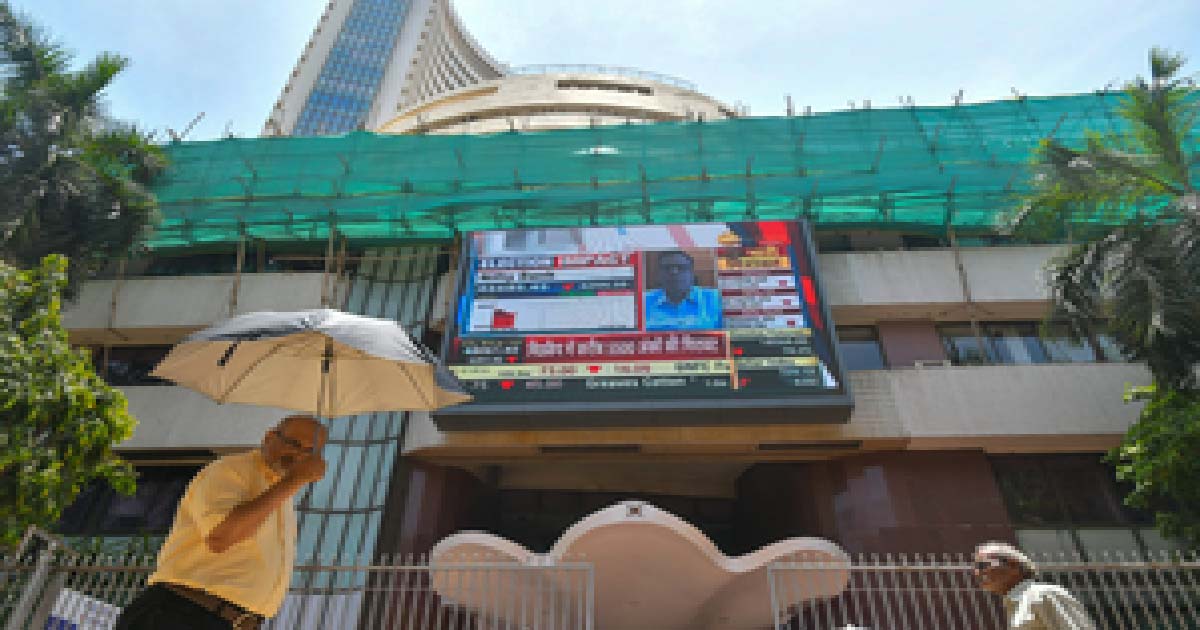Business
India’s crypto ad guidelines out, celebrities warned
In a bid to clamp down on risky crypto ads in India, the Advertising Standards Council Of India (ASCI) on Wednesday issued guidelines for all virtual digital assets (VDA)-related advertisements, which will be applicable on or after April 1.
All crypto/NFT ads must carry the following disclaimer, “Crypto products and NFTs are unregulated and can be highly risky. There may be no regulatory recourse for any loss from such transactions.”
No advertisement for crypto/digital asset products or exchanges may show a minor, or someone who appears to be a minor, directly dealing with the product, or talking about the product, said the advertising watchdog.
Since this is a risky category, “celebrities or prominent personalities who appear in crypto/NFT advertisements must take special care to ensure that they have done their due diligence about the statements and claims made in the advertisement, so as not to mislead consumers,” the ASCI warned.
Even as the Indian government continues to work on the framework for virtual digital assets (VDA), commonly referred to as crypto or NFT products, advertising for these products has been very aggressive over the past few months across TV, bring and digital media.
The ASCI noted that several of these advertisements do not adequately disclose the risks associated with such products.
“Advertising of virtual digital assets and services needs specific guidance, considering that this is a new and as yet an emerging way of investing. Hence, there is a need to make consumers aware of the risks and ask them to proceed with caution,” said Subhash Kamath, Chairman of ASCI.
The ASCI extensively consulted with different stakeholders, including government and the virtual digital asset industry — to frame guidelines for virtual digital asset advertising.
“Every advertisement for VDA products must clearly give out the name of the advertiser and provide an easy way to contact them (phone number or email). This information should be presented in a manner that is easily understood by the average consumer,” according to new guidelines.
“No advertisement may show that VDA products or VDA trading could be a solution to money problems, personality problems or other such drawbacks.”
The council said that no crypto/NFT advertisement shall contain statements that promise or guarantee future increase in profits.
“No advertisement may show that understanding VDA products is so easy that consumers do not have to think twice about investing. Nothing in the ad should downplay the risks associated with the category,” said the council.
The VDA products may not be compared to any other asset class which is regulated, it added.
Advertisers and media owners must also ensure that all earlier advertisements must not appear in the public domain unless they comply with the guidelines, post April 15, 2022.
“We have seen a spate of advertising for virtual digital assets which could compromise consumer interest in the absence of some guardrails. Use of celebrities and high decibel advertising would attract consumers to these offerings, without full disclosure of the risks,” said Manisha Kapoor, Secretary General, ASCI.
“Given that this is, as of now, an unregulated space, it is even more important for advertising to be upfront regarding the risks associated with these products,” Kapoor emphasised.
Although no Crypto Bill yet, the government in the Union Budget has proposed a 30 per cent tax on digital assets.
Finance Minister Nirmala Sitharaman also proposed 1 per cent TDS (tax deducted at source) on transactions in such asset classes above a certain threshold. Gifts in crypto and digital assets will also be taxed.
Business
Sensex, Nifty recover from early fall as profit booking keeps markets volatile

Mumbai, Dec 2: Indian stock markets opened with a sharp gap-down on Tuesday but soon recovered some losses as investors continued to book profits after the recent rally.
The Sensex was trading at around 85,508, down 134 points or 0.16 per cent, while the Nifty slipped 31 points or 0.12 per cent to 26,145.
“The Nifty’s positional trend remains bullish, with strong support at the 26000-26050 zone. On the higher side, 26300 could offer resistance on a closing basis,” market watchers added.
Heavyweights such as HDFC Bank, ICICI Bank, Ultratech Cement, Axis Bank, Bajaj Finserv, Tata Steel, Tata Motors PV, Titan Company and Power Grid dragged the indices lower.
Eternal also remained under pressure during the early trade.
However, selective buying in stocks like Asian Paints, Infosys, Bharti Airtel, Bajaj Finance, SBI, Maruti Suzuki, NTPC, HUL, and L&T helped the Sensex limit its losses and attempt a mild recovery.
In the broader market space, the Nifty MidCap index edged up 0.27 per cent, indicating some buying interest in mid-sized companies. On the other hand, the Nifty SmallCap index slipped 0.12 per cent.
Sector-wise, financial stocks were among the worst performers, with the Nifty Financial Services index falling 0.7 per cent and the Nifty Bank index dropping 0.4 per cent.
Meanwhile, the Nifty PSU Bank index gained 0.9 per cent, emerging as the top performer, followed by the Nifty Auto index, which rose 0.4 per cent.
Analysts said that markets remained volatile as traders continued to take profits amid mixed global cues.
“Investors can use the current period of consolidation to slowly accumulate fairly-valued largecaps and growth-oriented midcaps which will lead the next leg of rally in the market,” analysts stated.
The Smallcap segment continues to be over-valued. The Bank Nifty, despite the recent run up, have the potential to impart resilience to the market since there is valuation comfort in this segment. The pick up in credit growth is another positive for the segment.
Business
Gross enrolment under Atal Pension Yojana surpasses 8.34 crore: FM Sitharaman

New Delhi, Dec 1: Gross enrolment under the Atal Pension Yojana (APY), a bid to create a universal social security system for all, especially the poor, the under-privileged and the workers in the unorganised sector, has reached 8,34,13,738 (as on October 31), the Parliament was informed on Monday.
APY was launched in 2015 with the objective of creating a universal social security system for all Indians. It is open to all citizens of India between 18 and 40 years of age who have a savings account in a bank or post office.
As per the Scheme, the subscriber will receive pension benefits on attaining the age of 60 years.
“Hence, the pension benefit under APY is expected to start from 2035 onwards. However, the gross enrolment under Atal Pension Yojana as on 31.10.2025 is 8,34,13,738,” Finance Minister Nirmala Sitharaman told the Lok Sabha in a written reply to a question.
As on October 31, the female gross enrolment under APY is 4,04,41,135, which is 48 per cent of the total enrolment, she noted.
Further, in Bihar, the female gross enrolment under APY is 42,07,233, which is 57 per cent of the total enrolment in the state.
“As on 31.10.2025, a total of 7,153 Bank branches and 461 Post Office branches are enrolling people into APY in Bihar,” the Finance Minister stated.
The government and the Pension Fund Regulatory and Development Authority (PFRDA) have taken several steps to increase awareness and coverage of APY across the country, including rural and remote areas of Bihar.
These include periodic advertisements; APY Subscribers Information Brochure in 13 vernacular languages; and virtual capacity building programmes for Banking Correspondents (BCs) and field staff of Banks, Self Help Group (SHG) members, and bank-sakhis of State Rural Livelihoods Missions (SRLMs).
During the last five years, such programmes have been conducted across various districts of Bihar, including in Muzaffarpur, Patna, Bhojpur, and Nalanda.
Recently, financial inclusion campaigns for pension saturation were organised pan-India India including 8,093 such campaigns in Bihar, said Sitharaman.
Business
RBI to cut policy repo rate by 25 bp on Dec 5: HSBC

New Delhi, Dec 1: Since inflation is set to remain well below target for the foreseeable future, HSBC Global Investment Research on Monday projected that the RBI will cut rates by 25 bp during its monetary policy committee (MPC) meeting on December 5 — taking the policy repo rate to 5.25 per cent.
Growth has been strong so far, benefitting from the front loading of government spending and GST-cut led retail spending.
However, the November Flash manufacturing PMI (56.6) indicated that GST-led boost may have peaked with the overall new orders coming in soft, said the report.
“Growth is strong for now, but could soften in the March 2026 quarter as the fiscal impulse becomes contractionary and exports slow. We expect the RBI to ease policy rates in the upcoming December policy meeting,” the report mentioned.
The July-September quarter GDP growth came in at 8.2 per cent YoY, higher than 7.8 per cent in the previous quarter and higher than “our above-consensus forecast of 7.5 per cent”. While GVA growth came in at 8.1 per cent, nominal GDP grew 8.7 per cent.
The GDP momentum was clearly higher than our above-consensus forecast. There are some good reasons for the strength, said the report.
One, GST rate cuts were implemented on the September 22, but the announcement was made on August 15.
“We think that production picked up in anticipation of a rise in consumer demand. Two, our recent work indicates that lower income states are starting to rise, even growing faster than the higher income states,” the HSBC report mentioned.
This, too, could possibly explain the strength in India’s growth momentum. After all, national GDP is the sum of state Gross State Domestic Products (GSDP).
According to the report, India’s growth has held up decently despite the 50 per cent reciprocal tariff on India’s exports by the US since August.
-

 Crime3 years ago
Crime3 years agoClass 10 student jumps to death in Jaipur
-

 Maharashtra1 year ago
Maharashtra1 year agoMumbai Local Train Update: Central Railway’s New Timetable Comes Into Effect; Check Full List Of Revised Timings & Stations
-

 Maharashtra1 year ago
Maharashtra1 year agoMumbai To Go Toll-Free Tonight! Maharashtra Govt Announces Complete Toll Waiver For Light Motor Vehicles At All 5 Entry Points Of City
-

 Maharashtra1 year ago
Maharashtra1 year agoFalse photo of Imtiaz Jaleel’s rally, exposing the fooling conspiracy
-

 National News1 year ago
National News1 year agoMinistry of Railways rolls out Special Drive 4.0 with focus on digitisation, cleanliness, inclusiveness and grievance redressal
-

 Maharashtra1 year ago
Maharashtra1 year agoMaharashtra Elections 2024: Mumbai Metro & BEST Services Extended Till Midnight On Voting Day
-

 National News1 year ago
National News1 year agoJ&K: 4 Jawans Killed, 28 Injured After Bus Carrying BSF Personnel For Poll Duty Falls Into Gorge In Budgam; Terrifying Visuals Surface
-

 Crime1 year ago
Crime1 year agoBaba Siddique Murder: Mumbai Police Unable To Get Lawrence Bishnoi Custody Due To Home Ministry Order, Says Report












